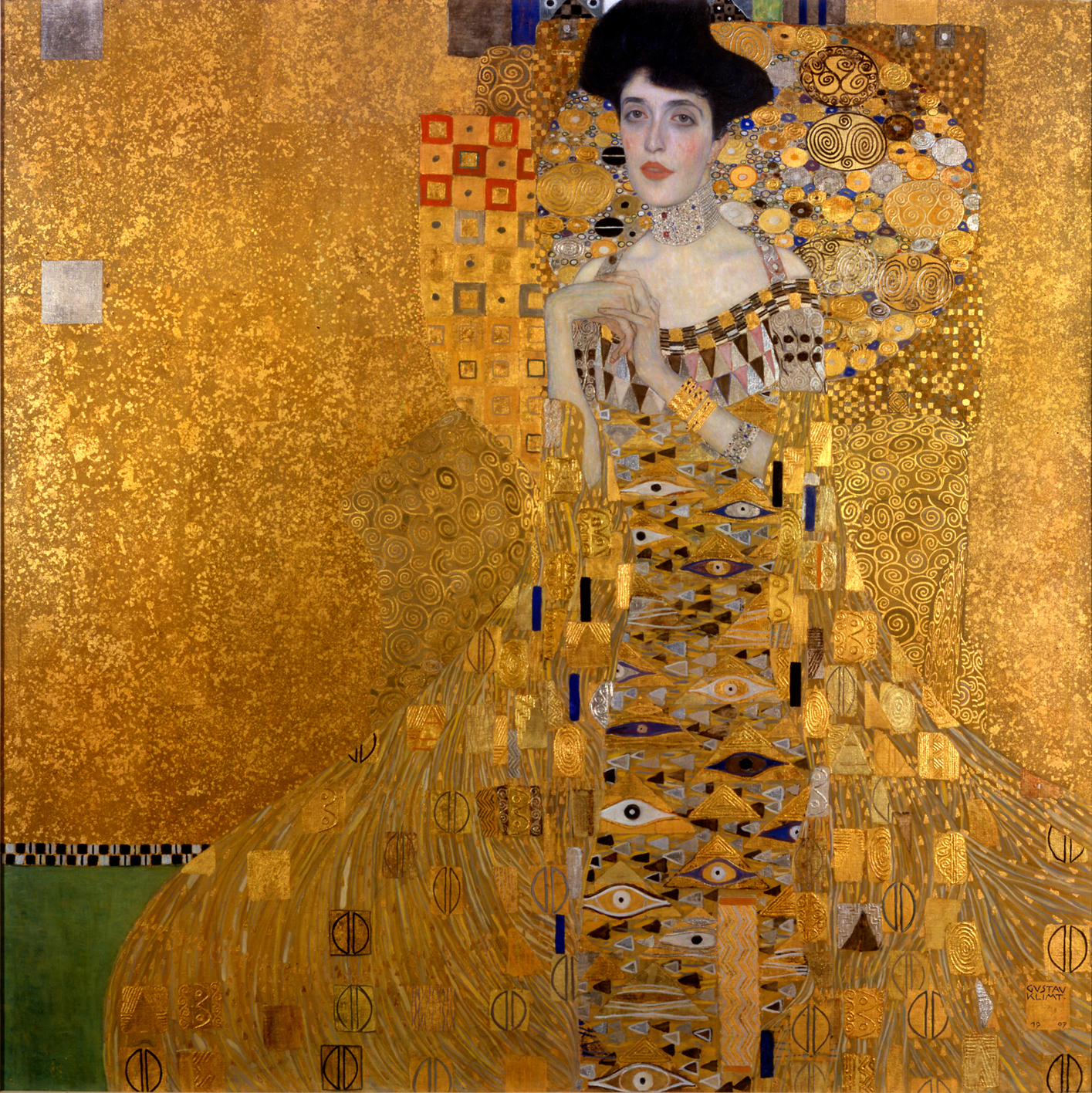By Judy Feldman |
www.wildemeyer.com
Recently, I saw the movie, “The Woman in Gold,” about the painting of Adele Bloch-Bauer by Gustav Klimt. I’m sure most of you know the story behind this amazing painting. If not, see the movie or read the book!
In brief, this glorious painting, was finally returned to Adele Bloch-Bauer’s niece after it had been stolen by the Nazis and kept in Austria. She then sold it to Ronald Lauder for $135 million. It now hangs in the Neue Gallery in New York, where everyone can enjoy it.
Although Klimt knew his subject well, he chose to portray her in his symbolist style. Her beautiful face is dreamy and arresting, but the rest of the painting is an amazing design, rendered exquisitely in oil paint and gold leaf, with many patterns in her dress and on the wall behind her.
I started thinking about how the female figure has always inspired artists, since the very beginning of visual art. While we can appreciate the classical depictions of women, it’s interesting to see how artists have interpreted this subject differently.
 |
In Your Dreams
Jacqueline Rochester
|
Looking though the works of Wilde Meyer artists, I see that there are just a few who paint the female figure. (Many prefer dogs, horses or cows!)
Jacqueline Rochester, one of the gallery’s older artists, is deceased, but several of her paintings are still handled by Wilde Meyer. I’m particularly drawn to them because I see the influence of Matisse, and, like me, she portrays inviting places where you’d like to be. The figure is important, but it’s not the only interesting part of her work.
In her biography, she said, “My paintings are a word of youth, a secret world of leisure and play, of lovely places…It’s a world apart from today’s realism and society’s struggles.” Her painting entitled “In Your Dreams” is a good example. The well-dressed figure is looking out pensively, and behind her are the elements of a cozy home: colorful rugs, part of a chair, dogs and a rocking horse. Although these elements are not arranged in a traditional way, we can understand the story. The open composition style and the way she shows only part of most objects makes the painting more interesting to me.
 |
White Orchids
Jacqueline Rochester
|
“White Orchids” is another painting that reminds me so much of Matisse because of its flat perspective and the simple rendering of the two women with just solid shapes and no worries about shading or small details. It’s another inviting scene, with many allusions to women: a domestic setting, and the feminine touch of flowers in the bowl, on a pillow, in a woman’s arms and on the wall (a painting which reminds me of Georgia O’Keefe -- a feminist!).
 |
The Good in Everything
Andrea Peterson
|
Andrea Peterson, a young artist at the gallery, sees painting the female figure as a way of expressing herself. She says that the imagery she presents is an extension of her dreams. “The Good in Everything” is indeed a woman’s story. Andrea explained that the coy fish represent luck and prosperity; the white flowers are purity and goodness. Her loose painting style in this work help to convey the sense of floating through a dream.
Andrea’s women are portrayed in many different ways. The figure in “The Rider” is completely different; she looks determined and commanding as she leads her horse. Her dress is modern, even a little sexy for a horse rider (maybe her pants are in the barn). Then, in another style, Andrea invokes her inner Degas in the painting entitled “Corps de Ballet.” She said, “In this painting, I was working with composition, focusing on the body poses. I liked showing the back view of the dancers, making them anonymous, and thus asking the viewer to think about their expressions.” The beautiful pastel hues and Andrea’s painterly brushwork for the background give the work great energy. The dancers look as if they just finishing twirling!
 |
Corps de Ballet
Andrea Peterson
|
 |
The Rider
Andrea Peterson
|
|
The women in
Linda Carter Holman’s paintings are stylized, with curvy shapes and glowing, innocent faces. Like Jacqueline Rochester, they are part of a story, a quiet life in the Southwest. Her use of bold color and small details on the objects that complete each painting make her work very appealing. The artist takes a simple act or seemingly mundane task, and makes it interesting. Linda has design elements that are symbolic to her and make their way into many of her works. The Calla lilies in the woman’s arm and the goldfish on the pot in “Little Winds” are an example of recurring themes. The woman in the foreground is touching the soil, but seems to be ready to take off and join her two friends as they fly away.
 |
Little Winds
Linda Carter Holman
|
In “Loving Cup,” a bride offers a cup that has attracted two colorful birds. Her white gown and headdress seem to be carrying her aloft. She almost looks swan-like to me. You can see the goldfish again on the drink sticks in the foreground and on the vase in the background holding the calla lilies. There are other things going on in this painting: one woman shoots an arrow into the sky, while another looks on. There are shooting stars in the sky. These women are telling us a story about an event, something that triggered Linda’s creative mind.
 |
Loving Cup
Linda Carter Holman
|
The female figure is often a thought-provoking focal point in a painting. Not too many are as dramatic as Klimt’s portrait of Adele Bloch-Bauer. I plan to have a good look at this famous work, when I visit the Neue Gallery in New York next week!
You can see more art by
Jacqueline Rochester,
Linda Carter Holman and
Andrea Peterson at
Wilde Meyer Gallery.































